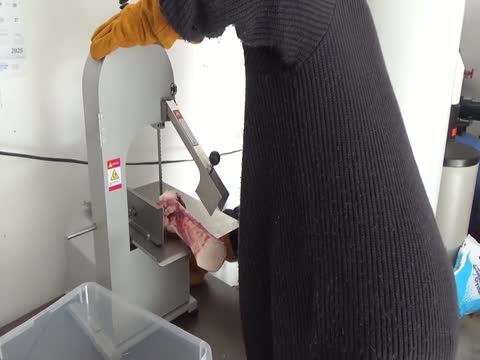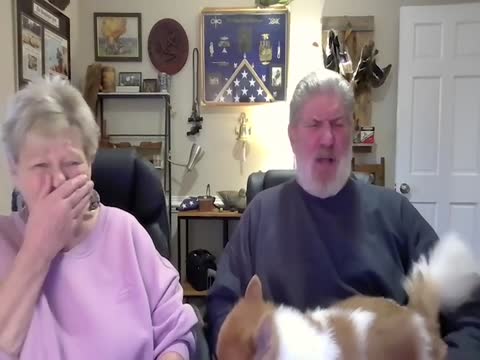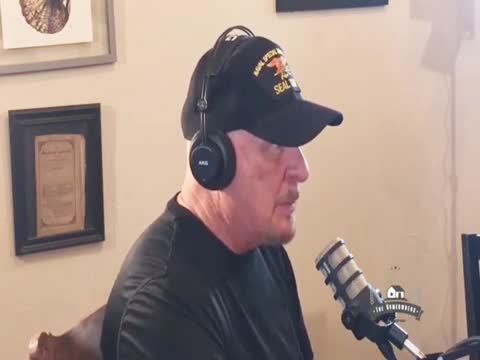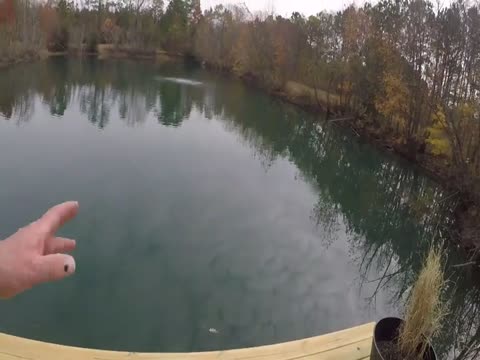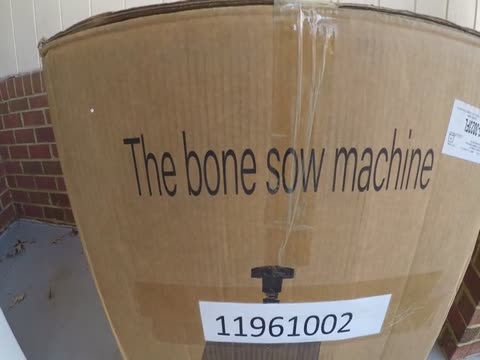Ask Master Chief Mad Dog Shit. The Dogs of Winter Warfare
Ask Master Chief Mad Dog Shit. The Dogs of Winter Warfare. Many Thanks For The SUPPORT...
Winter Warfare in NSW during the Cold War By Jim Madison
At the onset of WWII, the United States Army established the first regiment dedicated to mountain and winter warfare. That initial group of U.S. military winter warriors would go on to become the 10th Mountain Division. NSW has been involved in some form of Cold Weather/Winter Warfare training and operations for decades. In this article, I will focus specifically on Winter Warfare activities that have been conducted on SEA, Air and Land in support of the Cold War.
Early Winter Warrior from the 10th Mountain Division
I reported to SEAL Team TWO in January of 1981. Following SEAL Basic Indoctrination, (SBI), I was placed with 2nd Platoon. Our Platoon was established as a Winter Warfare Platoon scheduled to begin our deployment in October 1981. Our platoon conducted pre-deployment training for only a few months prior to our deployment, and, looking back, it did not adequately prepare us for the rigors of Winter Warfare, however, through the combined motivation from everyone in the platoon, we drove on with our mission. We were issued basic cold weather clothing along with specialized cold weather clothing that had just come on the market. Our cold weather boots varied from individual to individual based on foot size and availability. Our platoon was the first group to be issued Gore-Tex jackets. The first generation Gore-Tex Jackets were tan, (not the most
tactical color), for use in arduous environments. That being said, we had cotton overwhite parkas and trousers. Overwhites provided adequate camouflage, but tended to absorb water that made them heavy when wet.
We were the second SEAL Team TWO platoon to deploy to the recently commissioned Naval Special Warfare Unit TWO, (NSWU-2), onboard Royal Air Force (RAF) Base Machrihanish, Scotland. RAF Machrihanish is located near the wee village of Machrihanish near the southwestern coast of the Mull of Kintyre. About 4 miles from the main gate of RAF Machrihanish is the small town of Cambeltown, Scotland. Our platoon was scheduled to conduct several Joint Combined Exchange Training (JCET) trips, primarily to Norway and Germany during the winter season. Our platoon was divided into 1st Squad and 2nd Squad. The 1st Squad deployed to Norway to work with our Norwegian and British counterparts, while the 2nd Squad deployed to Germany to conduct training with Brit, German and 10th Special Forces Group personnel. Prior to our JCET trips, the platoon conducted training in the rugged Scottish countryside, patrolling with heavy backpacks to get us used to the rigors of Winter Warfare.
The 1st Squad of 2nd Platoon deployed twice to Norway. On one of those trips, 3 SEALs from 1st Squad attended the Military Ski School in Rjukin, Norway. There they learned the skills necessary for M&AW movement skills on skis.
Logo for the Norway Professional Ski Teacher (or Learning) Organization
Downhill ski technique training
Ski Patrolling tactics
Pulling the pulk
Casualty evacuation on Hjelper Sled
Skijoring
Individual recovery following falling through the ice
Crossing a frozen lake of uncertain ice thickness by using a boat
The 1st squad also worked with our Norwegian and British counterparts on a number of special ops skills in the arctic environment of northern Norway. Those skills included rubber duck drops and maritime operations (MAROPS) utilizing dry suits for protection against the frigid water.
Klepper Canoe
Cold weather transit on Rigid Hull Inflatable Boats (RHIBs)
Although we felt that our deployment was a success, there was plenty of Lessons Learned. Our Commanding Officer, and our prospective Commanding Officer, came out to visit us
in Machrihanish at the tail end of our deployment in early 1982. Combining experiences of SEALs who served in the Personnel Exchange Program (PEP) with the Special Boat Service (SBS) in the UK, and SBS Standard Operating Procedures (SOPs), would improve our capabilities in Winter Warfare. For years the British have been cross training with our Norwegian counterparts, and with their combined experiences, they had come up with a complete program for operating in the Mountain and Arctic Warfare (M&AW) environment. Logically, the Brit’s winter operations objectives were summed up to be able to Survive, Move and Fight in the Arctic environment. That would become our objective for SEAL Team Winter Warfare into the future.
Survive, Move and Fight in the Winter Wonderland
When 2nd Platoon returned from deployment in March 1982, four of us remained with the platoon for our next pre-deployment training period. We would return to NSWU-2 for the winter of 1983/84. We had much to do in terms of the planning and training in M&AW. Once 2nd Platoon received our remaining 12 members, we focused on our upcoming Winter Warfare training period scheduled for 6 weeks starting in January 1983. Goose Bay in Labrador, Canada was chosen by our Training Department because of the guaranteed snow.
Our initial Winter Warfare equipment issue was provided, courtesy of our Brit counterparts with the coordination of our British PEP officer who was stationed with SEAL Team TWO through the Personnel Exchange Program. Our British PEP officer and PEP senior enlisted along with a fellow SEAL Team TWO Teammate who had served in the PEP with the SBS, were all instrumental in the training process. Two of the four of us that had remained with 2nd Platoon brought their experiences and Lessons Learned from Norway into the Winter Warfare training environment. We were allissued cold weather clothing items from polypro underwear to Gore-Tex outerwear, Lundhags ski boots, which were good for both overland patrolling and skiing, skis, bindings, Ravneskar tents, and other cold weather equipment. In 1982, Gore-Tex outerwear suitable for military use was just being developed; I believe SEAL Team TWO was the first to use it.
The equipment provided by the Brits consisted of wooden NATO skis outfitted with NATO bindings, metal ski poles, and lightweight, nylon overwhites that were a welcome addition. In order to properly utilize NATO skis and bindings, SEAL Team TWO had to special order ski boots from Europe specifically used with NATO bindings. Additionally, we were issued second-generation Gore-Tex parkas and trousers in camouflage, two man tents, Northface winter sleeping bags, and Optimus, white gas stoves. At that point, we felt that equipment-wise, we were well on our way to total proficiency in Winter Warfare. Now, we had to be taught to use that equipment.
LUNDHAGS SKI BOOT
NATO SKI BINDING
Ravneskar Tent
Survive
We were taught the first tenet of M&AW, which is to survive in the Arctic environment. We learned about cold weather illness and injuries such as exposure, (hypothermia), frostbite, trench foot, and preventative and treatment procedures. The acronym COLD was hammered into us on a daily basis, and hold true to this day.
C – Keep clothing CLEAN O – Avoid OVERHEATING L – Wear clothing in LAYERS D – Keep clothing DRY
The acronym COLD was a simple and effective way in conditioning us to maintain the proper habits important in preventing cold weather illness and injury. Although we endeavored to follow the principles of COLD, sometimes the environmental conditions in Canada were absolutely brutal and some of us experienced the onset of frostbite of our fingers and toes. It was important for all of us to clearly identify those symptoms early so that procedures could be implemented to prevent frostbite from becoming worse. In those cases, the patrol would have to stop to get the frostbite victim re-warmed.
We were taught how to survive in the field by the use of shelter, which, along with water procurement, are two of the most important aspects to survival in the Arctic. We were taught not only how to erect our tents, but, more importantly, where to erect our tents. We were taught how to construct natural shelters such as snow trenches, snow caves, and other effective winter survival shelters. We learned how to melt snow to make water using either our stoves or open fire specially constructed on snow. Water was not only necessary for hydration, but also to reconstitute our freeze-dried rations into hot, calorie packed meals.
Survival shelter and fire
Snow Cave
Move
The traditional mode of dismounted overland patrol movement in the winter environment is by skiing. Many of the guys in our platoon had never skied before, and besides two of the four original members of the platoon, none had ever cross-country skied. We had our work cut out for us. One week of the six-week program was devoted to downhill ski training since getting down a hill while carrying a backpack and a weapon was perhaps the most challenging aspect of our movement phase. We had to learn to ski and we needed to learn how to get down the hill safely. Needless to say, at the beginning of ski training it provided a lot of comic relief.
Skier Down
Skiers Down
Downhill ski training
Once we were proficient (enough) negotiating ski movement down hills, we were taught the art of cross-country skiing to include the use of wax under our skis, and how to utilize the edges of our skis to perform various overland cross-country skiing techniques such as the herringbone, side step, and traversing techniques for getting up hills. The diagonal gait was our primary technique for propelling ourselves on level terrain using a “kick and glide” motion. This is where the importance of utilizing the correct wax combination aided us in becoming more proficient in this aspect of cross-country skiing. As our skills improved, our training evolutions in ski movement became increasingly challenging.
M&AW Skier
Skijoring
Fight
We became gradually adept at survival and movement skills in the Arctic environment. Now it was time to put everything together. We were taught to combine and master all of the skills necessary to make us proficient winter warriors. First, second and third line equipment was how we grouped the survival and operational equipment we would carry with us while operating in the winter wonderland. First line gear consisted of necessary survival items that we carried in the pockets of our clothing. These items would include waterproof matches, flint and steel to create fire, small collapsible containers, or a small Nalgene bottle with which to collect and store water, snares to trap food, a small emergency first aid kit, and items with which to use as signaling devices such as a whistle, a small penlight or strobe light and a fluorescent panel. Our second line equipment consisted of a harness or vest that contained operational equipment such as ammunition, select ordnance items, hand-held radio, trauma (blow-out) kit, Nalgene water containers, our primary weapon, (rifle), and, in some cases, a secondary weapon, (pistol). Our third line equipment carried in a backpack included applicable operational radio gear, additional task related ordnance, optics, and our major survival equipment to include sleeping bag, ground pad, stove, food, snow shovel, shelter (tent or bivvy bag), extra clothing, and camouflage netting for our tents. The total amount of weight carried by each winter warrior averaged between 85 and 100 pounds.
M&AW Fire Team skirting a tree line in proper camouflage
We employed the crawl, walk and run method of training to ease us into the rigors of M&AW operations. Once we were all versed in survival methods, we gradually increased our proficiency in movement on skis, while at the same time, interpolating operational skills. We conducted biathlon races with first and second line equipment to get used to movement with the gradual addition of equipment. To get us moving on skis with 1st, 2nd, and 3rd line equipment, while at the same time, ease us into the correct use of M&AW SOPs, the “Boys Night Out” evolution was utilized to bring all M&AW lessons together in a non-tactical setting. We would all set out during daylight with full equipment and practice our ski patrol SOPs while it was easier to see where we were going, and how we were moving. We would ski to a pre-determined tactical laying up position, (LUP), located in ideal terrain for tactical use, and go through all of the proper motions for setting up a tactical LUP while we were able to see what was going on. Prior to entering our LUP area to set up are tents, we utilized fishhooks and laid out deception trails to provide us early warning and confuse any opposition forces looking for us. Once we were satisfied with our deception trails and had a clear view to avenues of approach, we began to set up our tactical LUP. While it was still daylight out, we put into practical application the correct procedures for digging into the snow, setting up our tents and laying out our camouflage netting in order to minimize detection from the ground or from the air. Because the pre-determined location for the tactical LUP was conducive to the important points we needed to learn, and the fact that we practiced these techniques during the light of day, the “Boys Night Out” exercise was made all the more impactful to our learning curve. When darkness finally fell, we conducted night ski movement with only 1st and 2nd line equipment. It is deathly silent at night in the winter and sound carries for quite a distance. Noise discipline and proper tactical movement techniques were definitely the lesson of the night. Following the night movement evolution, we all returned to our LUP to learn proper tent routine. Because of the non-tactical setting for this evolution, we were all able to use white lights with which to clearly see everything going on. Tent routines will vary from tent pair to tent pair, but the basic fundamentals must apply. Each tent pair
needs to coordinate each partner’s role within the pair. An ample amount of snow needs to be collected and stowed outside the tent door. The stove needs to be primed and started in order to melt snow for water and to prepare meals. Excess snow must be brushed off of each man’s ski boots prior to entering the tent. All wet clothing either needs to be hung up inside the tent or placed inside the sleeping bag in order to dry out prior to the next patrol movement. Prior to sleep, all water bottles must be filled up and ski boots placed inside the sleeping bag to keep them from freezing. These as well as many other procedures are usually picked up during the “Boys Night Out” exercise. The following morning we skied back to reinforce the lessons regarding movement with full equipment from the previous day.
Ski Kneeling Position
Ski Standing Position
Ski Prone
Tent with Winter Camo Netting
Tactical Winter LUP
By the fourth week of training, we were ready to get into full-blown Winter Warfare operating. Prior to our Final Training Exercise, (FTX), we learned the same SEAL tactics from SBI. We conducted contact drills, ambushes and raids, but you get a whole new perspective on those tactics when you’re conducting them on skis. Operating in the M&AW environment is one of the hardest, if not the hardest tasks we can do in SEAL Team. Moving, shooting and communicating on skis can be extremely difficult until you truly become proficient at it. Again, we utilized the crawl, walk, run method, especially during live fire evolutions. Once it was determined that we were ready to conduct our FTX, we had a little over a week before the end of training. The training cadre maintained a flexible schedule in order to ensure that we were proficient enough to execute our FTX. If we needed more work, the FTX would be conducted with the number of days we had remaining before returning to Little Creek. Since we had a little over a week, we would be tested in the following key areas during our FTX. Our ability to ski over long distances each night was a major focus. Maintaining a tactical LUP during each day of our long distance infiltration. Reconnaissance with a follow-on live fire raid would be the final test. As with all SEAL Team FTX’s, we train the way we’re going to fight. Following our FTX, everyone felt we were ready for our next deployment to Europe.
Properly camouflaged Winter Warrior maintaining security
Raid Rehearsal
NATO’s Northern Flank
When 2nd Platoon made it’s return to Machrihanish in November of 1983, we felt we were ready for anything in the Winter environment, and we were looking forward to deploying to Norway. Our President then, Ronald Reagan, was in office for a little over two years in his first term and the Cold War was still underway. 2nd Platoon took everything about Winter Warfare seriously and was eager to make our mark with the Norwegians and the Brits during the major winter exercise in Norway. Northern Norway borders the USSR and is known as NATO’s Northern Flank. NATO had determined that if conflict were to escalate between the world’s two super powers, that the Northern Flank would be a major area of operations (AO). We arrived in Ramsund, Norway, home to our counterparts the Marine Jaegers. These guys were born with skis on their feet and very proficient operating in the winter environment. We endeavored not to slow them down.
Ramsund, Norway
We trained hard with our Norwegian Teammates in preparation for our Winter NATO exercise. Our platoon was broken down into 3 separate patrols and each would be interspersed with SEALs and Marine Jaegers to conduct 3 different missions during the exercise. Typical missions that would be undertaken in the NATO Northern Flank would be guerrilla type operations. Primarily strategic reconnaissance with possible follow-on direct action missions based on the intelligence collected. A classic Winter Warfare full mission profile with which I was involved included a fellow SEAL platoon mate and two Marine Jaegers, which rounded out our 4-man team. We parachuted into the Norwegian Sea about 30 nautical miles west of the coast, fired up the 35hp outboard of our inflatable boat and commenced over-sea transit to our pre-determined Observation Post (O.P.), near the entrance to a large fjord. Our initial tasking was to provide ‘round the clock observation to detect Opposition Force (OPFOR) maritime movement. The exercise OPFOR in this case was actually a U.S. Navy Amphibious Ready Group (ARG), consisting of at least 3 ships. Once we landed at our Beach Landing Site (BLS), we
camouflaged our boat, established our O.P./LUP, covered our tracks, and began the boring task of keeping our eyes peeled for 24 hours of how ever many days we needed to keep our eyes peeled. We maintained daily communications through high frequency (HF) and Morse code. Finally, early on the fourth morning of our mission, we spotted the convoy silently making their way to the opening to the fjord. It was daylight when the last ship made its way past our O.P.
Our Norwegian patrol OIC scopes out the last ship of the convoy
We maintained our position until we received word from higher headquarters (HHQ), to move to another position to conduct a follow-on mission. We all packed up, sanitized our O.P./LUP, transited to another BLS, cached our boat, donned our skis, and made our way to the next location.
Typical Beach Landing Site (BLS) in Northern Norway
We established an LUP on the high ground and away from the encampment of several hundred U.S. Marines. The Marine Expeditionary Unit (MEU) made up the OPFOR ground forces for this exercise. Our follow-on mission was to identify any Early Warning (EW) capabilities, and to neutralize it. After our initial reconnaissance, we identified an EW unit, which was located high above and some distance from the rest of the MEU encampment. This was kind of good luck for us, and bad luck for whoever was manning that EW site. As is usual, we snuck in during the wee hours of darkness and neutralized the target. The initial action raised the alarm, and we were on the run. The four of us made our way up a steep embankment until we could reach the top of the plateau. Once there, we could don our skis and ski away quickly. There was one problem however; one of our Norwegian friends had lost one of his skis. For me, that would have been a major problem, but, our Norwegian friends had no problem keeping up, as they would switch off from time to time in order to make the extraction. Believe me, skiing on only one ski, while with a backpack and a weapon in your face is quite the challenge, but our Marine Jaeger Brothers did it with no problem. We made it in time to meet our extraction vessel and return safely to Ramsund.
When our platoon returned to the United States, many of us remained with the platoon for another pre-deployment cycle and plans for another winter deployment. By this time, SEAL Team TWO had made improvements with the winter training program by tacking on additional weeks of training to facilitate a more robust ski program and to include combat swimmer techniques in cold weather environments. Our continued winter deployments to Norway got to be more challenging and we were able to improve equipment and techniques with each subsequent winter training period and deployment. At the end of the Cold War in December of 1991, we continued Winter Warfare training with follow-on deployments to Norway through 1996. Into the late 1990’s, those winter training blocks and deployments began to wane. That would change radically after 11 September 2001.




